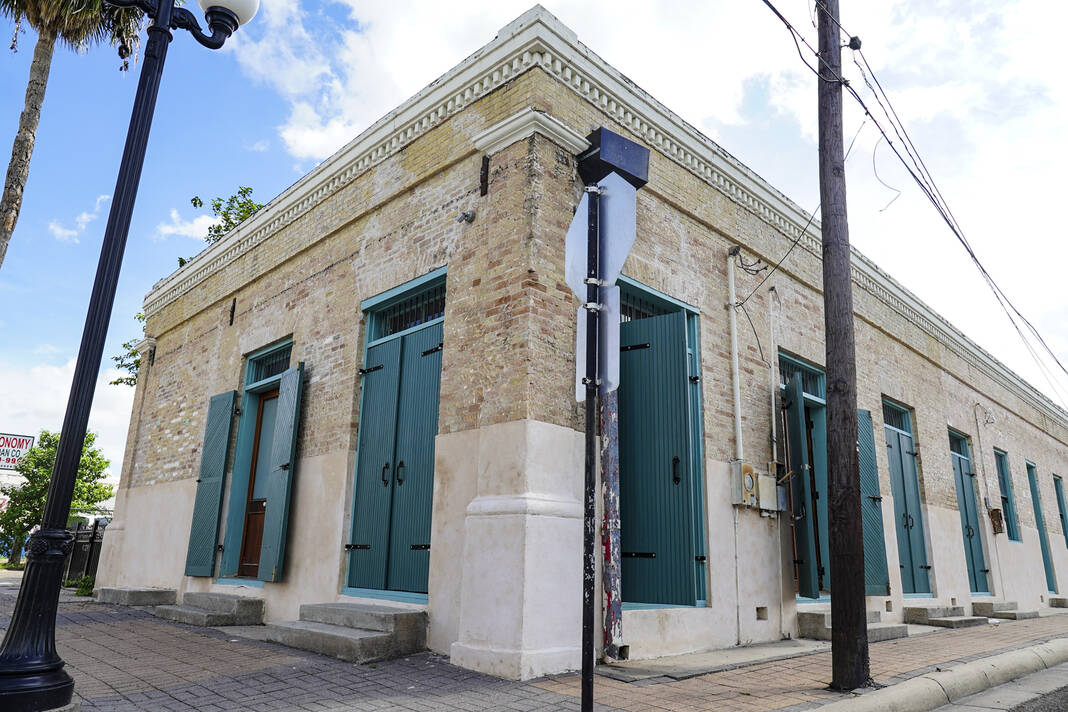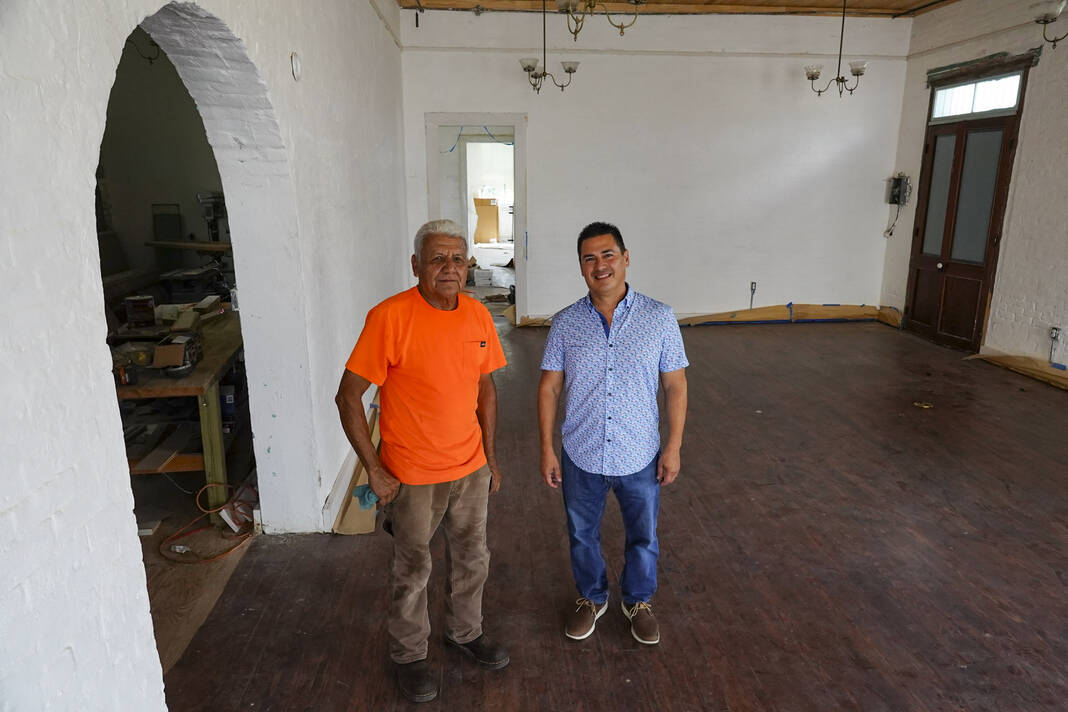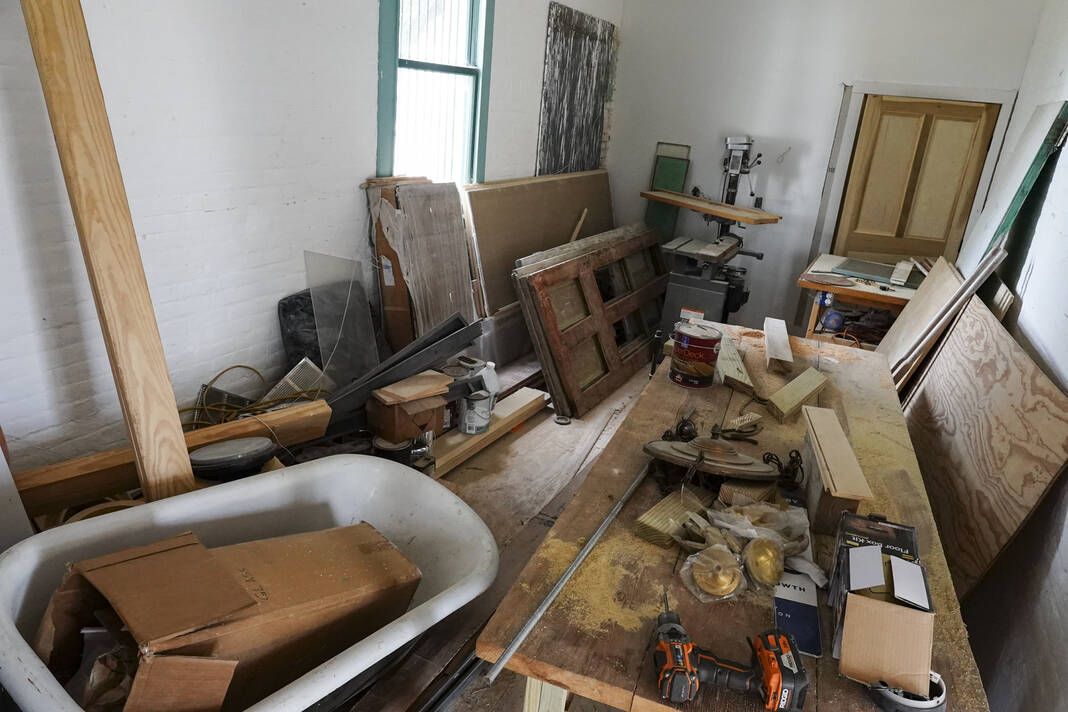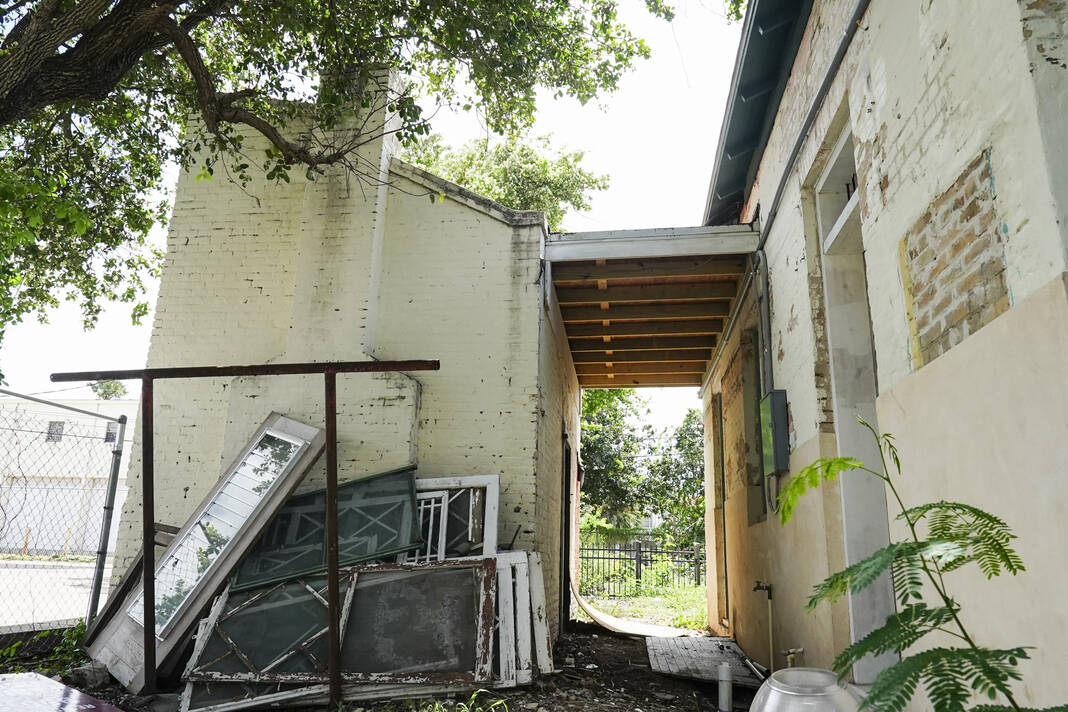Some detective work by city of Brownsville historic preservation officer Juan Velez has linked another building downtown to Samuel W. Brooks, the city’s preeminent architectural designer and builder in the late 1800s.
The building, known as “El Alamo” stands at the corner of East 9th and East Adams streets. Fernando Balli, who’s saved several historic structures over the years, bought the property in 2017 and is in the process of restoring it.
“We were very fortunate because all the main structure was still there,” he said. “They hadn’t made any significant changes. The cistern is still standing. Somebody rebuilt the cistern.”

The property is unusual in that the original detached kitchen is still intact, Balli said. Common in the late 19th century to prevent the house or other main structure from being destroyed in a cooking fire, few examples of detached kitchens survive today, he said. Balli said he’s a few months away from completing the restoration, which owes much to the involvement of master carpenter Pedro Rocha.
“He’s been my only carpenter since the beginning, carpenter, friend,” Balli said. “I can’t do it without him. All these buildings have to be done by hand. Nothing is ever square on these old buildings. He has to build every door, every shutter, every window by hand.”
Velez, who stumbled across the Brooks connection while doing research to help Balli obtain historic tax credits for the project, said the building is one of the city’s best examples of American Greek Revival architecture, it’s flat roof signifying the Spanish influence. The structure is very similar to the 19th-century Greek Revival architecture found in New Orleans’ French Quarter, he said.
El Alamo was originally built as a dwelling for Tamaulipas-born Manuela Alcala Bouis, who bought the property for $200 in 1891, Velez said. It sat catty-corner to the Old Grammar School, demolished in 1929 and now the site of Putegnat Elementary. Once El Alamo was complete, Bouis’ sons Carlos and Luis Jr. moved their store into it from another downtown location, sharing the roof with their mother’s residence. Naming it “El Alamo” was the Bouis brothers’ idea, Velez said.
Meanwhile, Brooks built some of the highest profile residential, public and commercial structures in Brownsville and Matamoros, including the M.H. Cross House, the Post Hospital at Fort Brown, the Louis Kowalski House and the Josephine G. Browne House, Velez said.
“He was the most important architect at the end of the 19th century,” he said.
Balli said he plans to rent the building once the restoration is complete and, as with most of the other properties he’s restored, is in no hurry to sell.
“We’ve only sold one of them because we kind of get attached to them,” he said. “I’ve got some (tenants) that are interested and asking questions and what not. We just need to get closer to being finished to be able to say it’s ready to go. It’s got a lot of possibilities. A food truck park got approved next door, so there’s lots of stuff going on around us as well.”







